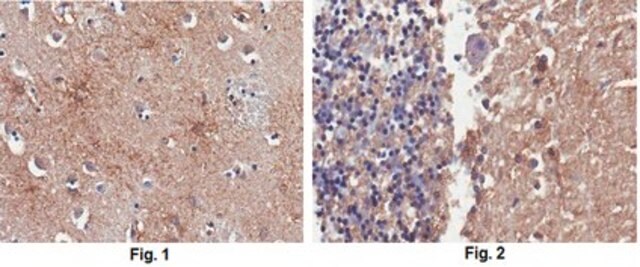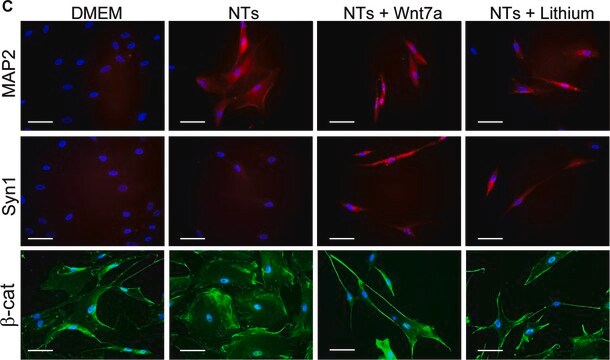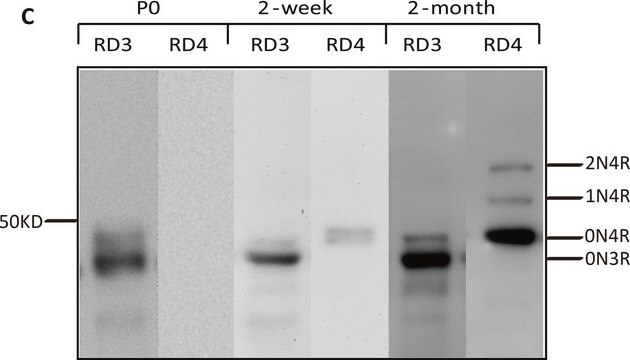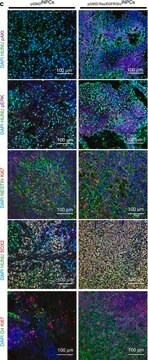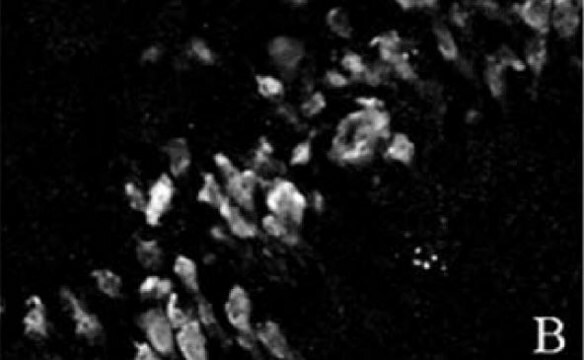MAB378
Anti-MAP2 Antibody
CHEMICON®, mouse monoclonal, AP20
Sinônimo(s):
Microtubule Associated Protein 2
About This Item
Produtos recomendados
Nome do produto
Anti-MAP2A Antibody, AP20, ascites fluid, clone AP20, Chemicon®
fonte biológica
mouse
Nível de qualidade
forma do anticorpo
ascites fluid
tipo de produto de anticorpo
primary antibodies
clone
AP20, monoclonal
reatividade de espécies
quail, bovine, human, mouse, amphibian, Xenopus, rat, avian
fabricante/nome comercial
Chemicon®
técnica(s)
immunohistochemistry: suitable
western blot: suitable
Isotipo
IgG1
nº de adesão NCBI
nº de adesão UniProt
Condições de expedição
dry ice
modificação pós-traducional do alvo
unmodified
Informações sobre genes
human ... MAP2(4133)
Descrição geral
MAP-2 is a stringent marker for neurons. In addition, MAP-2 displays intracellular specificity. In the central nervous system, MAP-2 is confined to neuronal cell bodies and dendrites. There are exceptions, however, where some axons stain positive for small amounts of MAP-2 (Caceres, 1984; Binder, 1986). MAP-2 is uniformly distributed throughout the cell when first expressed in cultured neurons but becomes selectively localized as dendritic development proceeds (Caceres, 1986; Dotti, 1987).
Especificidade
Imunogênio
Aplicação
1:50-1:200. AP20 stains dendrites and neuron cells bodies but not neuronal processes and axons. A previous lot of this antibody was used in immunohistochemistry.
Western blot:
SDS-PAGE Profiles: In SDS-PAGE MAP-2 from adult rat migrates as a closely associated doublet having a molecular weight of approximately 300 kD. However, early in brain development (postnatal day 10 in rats), MAP-2 migrates as a single band that is identical to the lower molecular weight band of the adult MAP-2 doublet (MAP-AP20). Later in development (postnatal days 17-18), the mobility of MAP-2 changes to the adult doublet form. (In the spinal cord, conversion to the adult form occurs earlier).
Western blot: A 1:500 dilution was used in a previous lot.
Optimal working dilutions must be determined by end user.
Neuroscience
Neuronal & Glial Markers
Neurofilament & Neuron Metabolism
Qualidade
Western Blot Analysis:
1:500 dilution of this lot detected MAP 2 on 10 μg of PC12 lysates.
Descrição-alvo
Ligação
forma física
Armazenamento e estabilidade
Handling Recommendations: Upon receipt, and prior to removing the cap, centrifuge the vial and gently mix the solution. Aliquot into microcentrifuge tubes and store at -20°C. Avoid repeated freeze/thaw cycles, which may damage IgG and affect product performance. Note: Variability in freezer temperatures below -20°C may cause glycerol containing solutions to become frozen during storage.
Nota de análise
Brain tissue
Cultured neurons
Outras notas
Informações legais
Exoneração de responsabilidade
Não está encontrando o produto certo?
Experimente o nosso Ferramenta de seleção de produtos.
recomendado
Código de classe de armazenamento
12 - Non Combustible Liquids
Classe de risco de água (WGK)
nwg
Ponto de fulgor (°F)
Not applicable
Ponto de fulgor (°C)
Not applicable
Certificados de análise (COA)
Busque Certificados de análise (COA) digitando o Número do Lote do produto. Os números de lote e remessa podem ser encontrados no rótulo de um produto após a palavra “Lot” ou “Batch”.
Já possui este produto?
Encontre a documentação dos produtos que você adquiriu recentemente na biblioteca de documentos.
Nossa equipe de cientistas tem experiência em todas as áreas de pesquisa, incluindo Life Sciences, ciência de materiais, síntese química, cromatografia, química analítica e muitas outras.
Entre em contato com a assistência técnica

